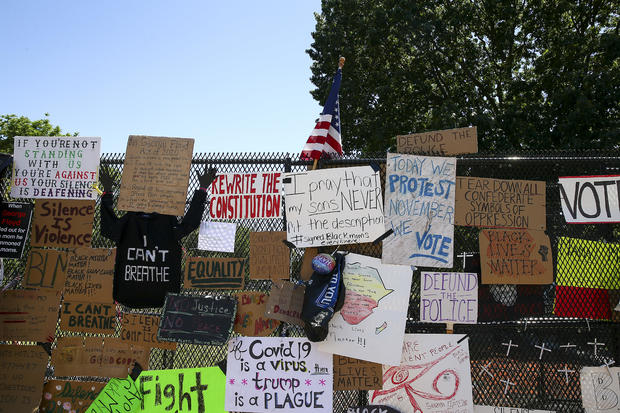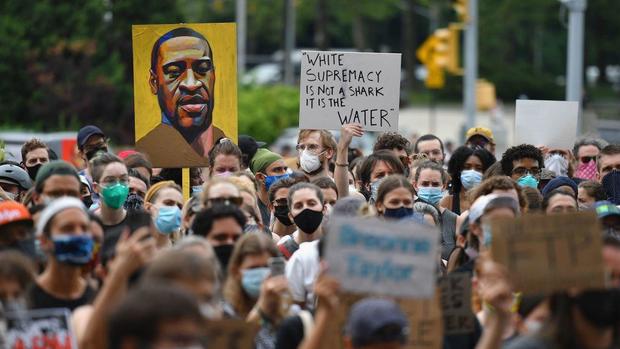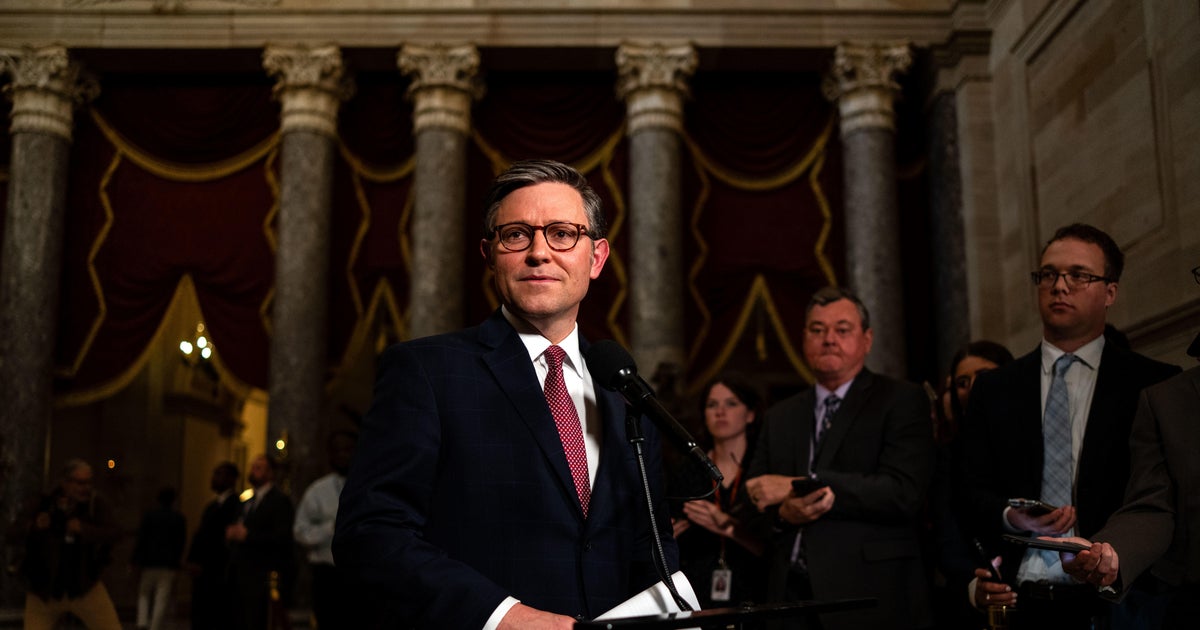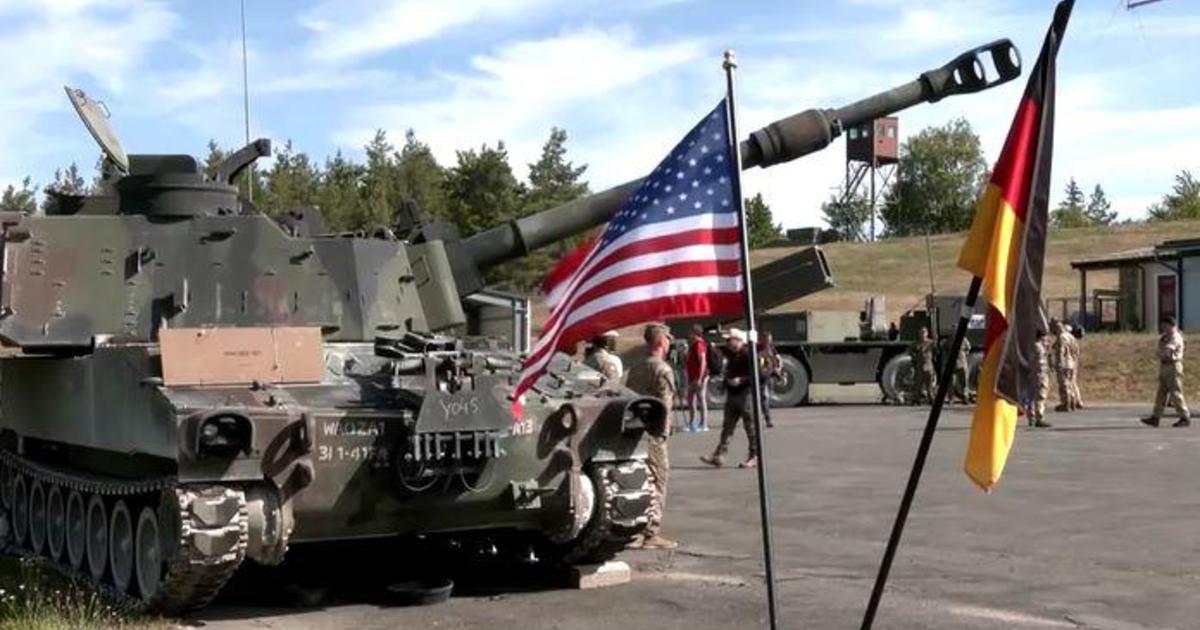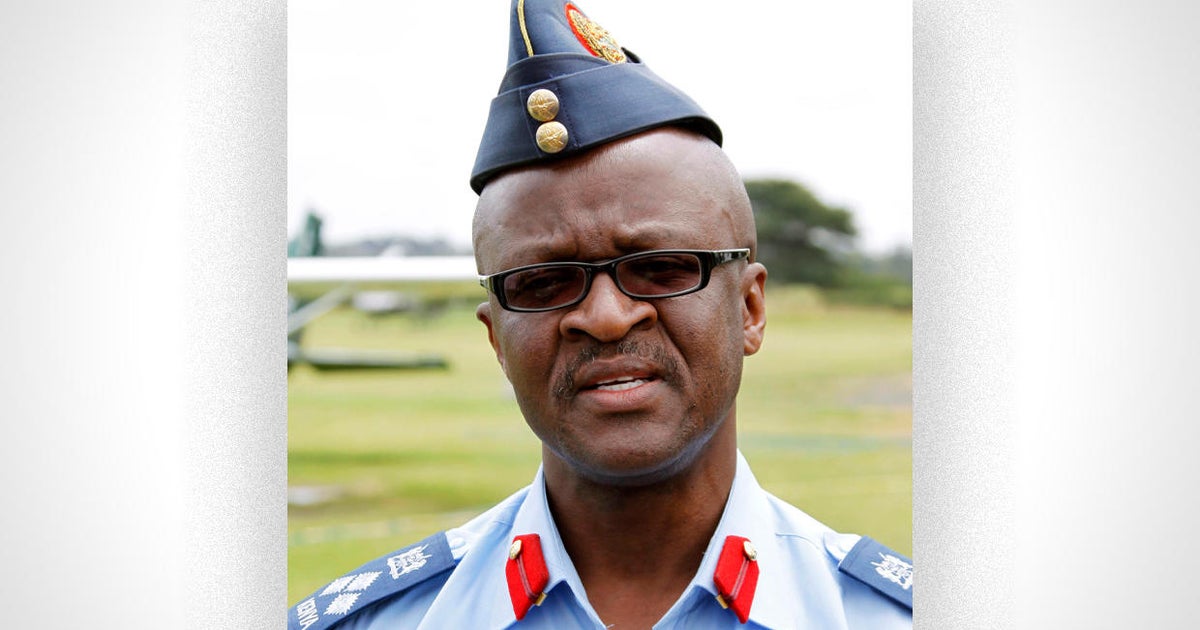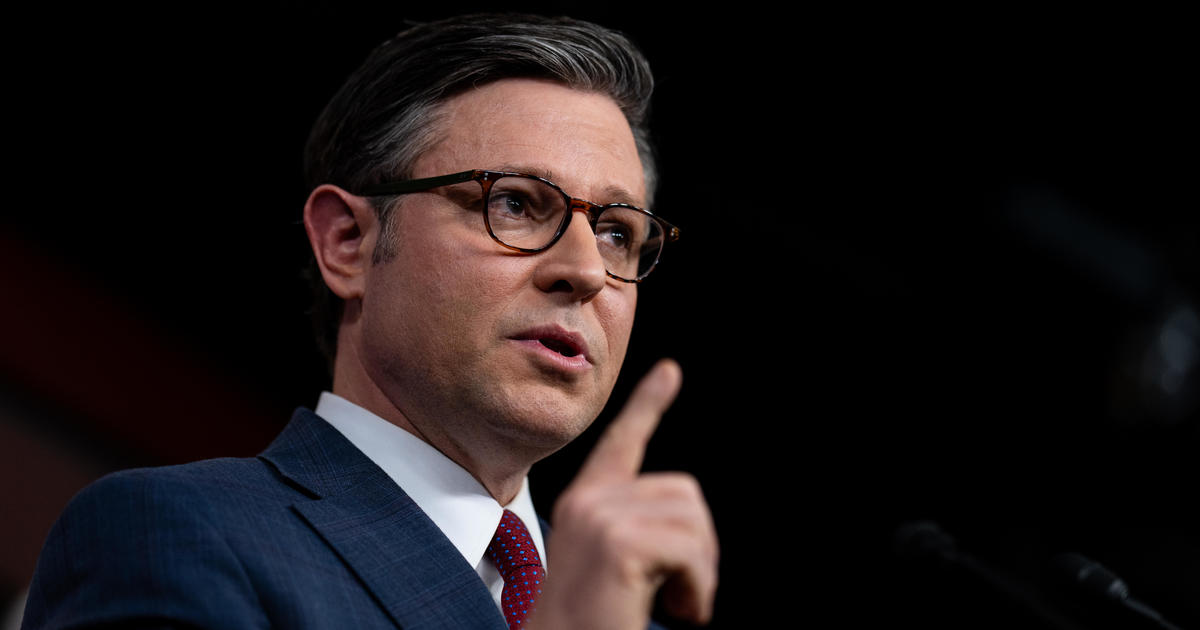The Smithsonian started saving signs from Black Lives Matter protests outside the White House
Curators from three Smithsonian museums have begun collecting signs and other objects from Black Lives Matter protests that were held outside the White House and other places in Washington D.C. The Smithsonian said in a statement Thursday that it wants to preserve items so Americans can "understand the role that race has played in our complicated 400-year history."
The death of George Floyd ignited protests throughout the country, including D.C.'s Lafayette Square, a public park located north of the White House. The area itself became part of the national discussion around the protests after authorities cleared the park of protesters and President Trump held a controversial photo-op in front of a church. After the incident, metal fencing was raised around the White House and it became a makeshift memorial amid the demonstrations.
The National Museum of African American History and Culture (NMAAHC), the National Museum of American History and the Anacostia Community Museum have formed a coalition to preserve and document "expressions of protests and hope" from the park, according to the Smithsonian.
"Recognizing that the tragic killing of George Floyd has spurred a transformative time in U.S. history, the Smithsonian Institution is collecting today so that the world, in the present and future, can understand the role that race has played in our complicated 400-year history," the Smithsonian said. "This coalition of museums will enable Smithsonian curators to work together with activists and groups on the ground to ensure that this grassroots-led community movement and pivotal moment is accurately documented."
Some of the items of interest include homemade protest signs, placards, tee shirts, photographs, audio recordings, cell phone footage and original art, NMAAHC spokesperson Dwandalyn Reece said. Curators have not determined how the objects will be used, but possibilities range from an online exhibition to a digital photo presentation paired with a round-table discussion, said Reece, who is the associate director of curatorial affairs at NMAAHC.
The coalition is made up of historians who have specialties in slavery, incarceration, civil rights and social protest. Aaron Bryant, who organized a rapid response team that documented protests in 2017 from U.S. cities such as Ferguson and Baltimore, is one of them and is now leading this current team.
"This museum is as interested in the present as it is in the past," said Bryant, a photography and social protest historian. "So much of what happened in the distant past, in many ways, set the stage for what is happening right now, in the summer of 2020, as people gather in groups, large and small, to claim their rights for equality."
"How they do this—along with the social changes they inspire and the multi-racial coalitions they build—need to be documented as crucially important parts of African American history and culture," he added.
